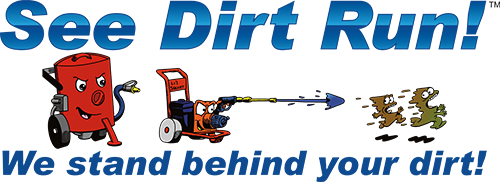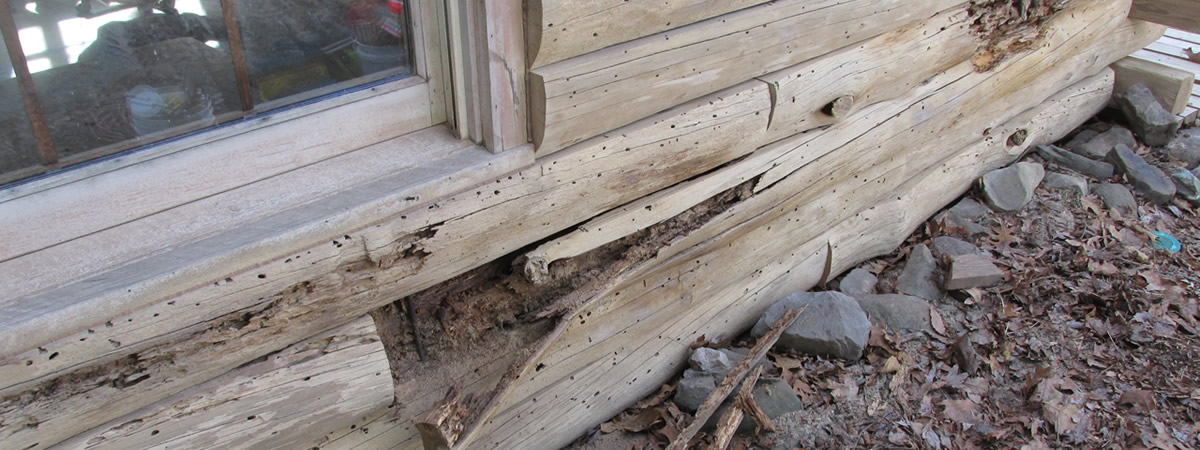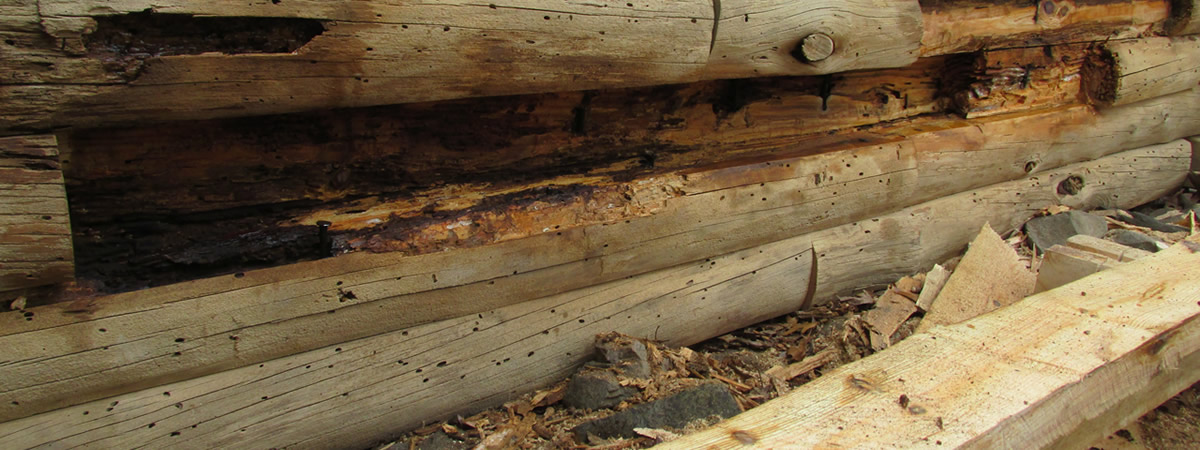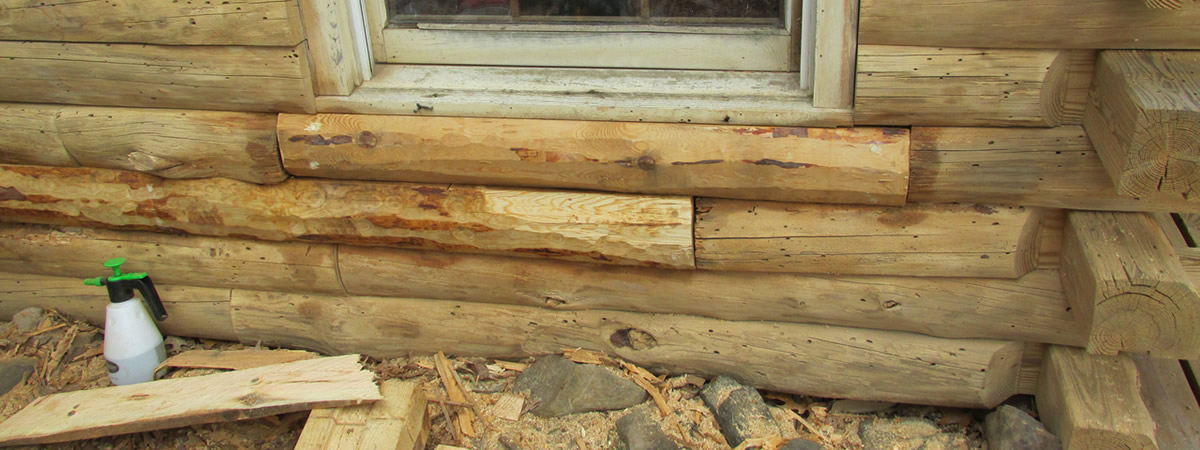Half Log Replacement, Rot Repair Work for Log Homes, Rotten Siding & Trim Replacement & Rotten Deck Board Replacement in MD, VA, WV
Thank you for viewing our articles. We recommend you take some time to read what we have to share. Rod Rodriguez has well over a decade of hands on wood care experience and has worked with over fifteen different species of wood. We offer log home rot repair ranging from minor rot repairs to half log replacement. We can also use thermal imaging to aid in detecting rot in your logs. It is our goal to help you understand what your project entails, and to clearly communicate what needs to happen on your particular job. Please do not hesitate to contact us should you have any questions at all about your home. We look forward to assisting you with your wood care needs for many years to come.
The Basic Facts about Rot
By Rod Rodriguez
President, See Dirt Run!™ Inc.

The main component of any wood is cellulose, which serves as the primary source of nutrition for both insects and decay fungi. The biggest enemy to wood is moisture. When untreated wood is exposed to the elements, to weather and particularly to moisture, decay fungi can establish very quickly and rot can occur in just a few short years. Rotting wood is also a natural home for wood destroying insects like powder post beetles, termites, carpenter ants and other borers. In general, wood destroying fungi need three things to survive and thrive; they are food (wood cellulose), water and oxygen.
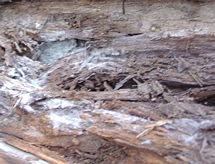 Trapped moisture can not escape from the wood, and high risk areas for rot include painted surfaces, potted plants where the planter has direct contact with the wood, and underneath outdoor carpeting and door mats. Typically, if the WMC (wood moisture content) is below 20%, rot is not a concern. However if the WMC is over 20% and the wood is unable to properly dry out, it becomes a breeding ground for fungi and eventually for rot. To grow, fungi need temperatures between about 40 and 100 degrees Fahrenheit. Oxygen must be present. The wood itself is a source of food for the fungi to live on, and they attack the carbohydrates which are the cellulose and lignin.
Trapped moisture can not escape from the wood, and high risk areas for rot include painted surfaces, potted plants where the planter has direct contact with the wood, and underneath outdoor carpeting and door mats. Typically, if the WMC (wood moisture content) is below 20%, rot is not a concern. However if the WMC is over 20% and the wood is unable to properly dry out, it becomes a breeding ground for fungi and eventually for rot. To grow, fungi need temperatures between about 40 and 100 degrees Fahrenheit. Oxygen must be present. The wood itself is a source of food for the fungi to live on, and they attack the carbohydrates which are the cellulose and lignin.
Brown Rot: A brown rot fungus attacks the cellulose and the wood becomes a more brown color. The wood may shrink, crack across the grain, and become powdery in substance. Brown rot is most often found in softwoods, but can occur in hardwoods.
White Rot: White rot fungi attacks both the lignin and the cellulose of the wood, causing a loss of color or a white or bleached look. It will not crack across the grain until the rot is very severe. The wood may feel soft and spongy. White rot is most commonly found in hardwoods, but can occur in softwoods.
Soft Rot: Soft rot is created by fungi that are related to molds, unlike those responsible for white and brown rot. Soft rot is a more shallow rot and is most often found where wood is severely weathered and exposed to fairly consistent moisture. Soft rot is common on wood shingles.
What about dry rot? In the past people used to talk about the different kinds of rot being dry or wet and the belief of some was that rot could occur when the wood was dry. This is not true. All wood that rots has been wet at one time. It may dry out after the damage has already been done, but it does not rot in a dry state. Remember, you need water, oxygen and food (wood) for rot to flourish. Take one away, the wood will not rot. We hear about trees that sit in pristine condition at the bottom of a lake or swap to be found later with perfect lumber. This is because they could not rot with out oxygen.
While mold itself does not cause decay, is does increase the ability of the wood to absorb moisture and therefore wood that has severe mold problems is more susceptible to fungi growth.
On decks, all potted plants should be elevated and placed on plant stands, preferably one with casters so they may be moved. This allows for airflow so the wood can dry. Wood homes, decks and outdoor wood furniture should never be painted, but may be stained to obtain a similar look that will allow the wood to dry and breath. Stacked fire wood should never be placed next to or leaning against the home, since wood piles are often attacked by wood eating insects. It is just a quick jump from there to your home. Wood homes should always have at least one foot of clearance from ground contact at the foundation line. If you have any questions about the condition of your wood and how to protect it, please contact our office. We will be glad to assist you.
© See Dirt Run!™ Inc., All Rights Reserved
